Research
The Plasma and Space Propulsion Laboratory at Yokohama National University (YNU) conducts various research activities using both experimental and computational approaches.
当研究室では次のテーマについて実験と数値計算による研究を行っています。
Electrospray Microthrusters / エレクトロスプレー・マイクロスラスタ
Electrospray thrusters are microthrusters that generate propulsive force by ejecting ions at high velocity through the electrospray phenomenon. These thrusters utilize arrayed emitter electrodes, which are fabricated using 3D MEMS (Micro-Electro-Mechanical Systems) technology and field emitter array processes. The propellant supply mechanism is notably straightforward, leveraging ionic liquids that have almost zero vapor pressure as the propellant. This choice eliminates the need for a high-pressure gas system. Consequently, the propulsion system can be significantly miniaturized, resulting in a design that is smaller, lighter, and more efficient, suitable for mounting on a 1U (10 cm cube) satellite. The research encompasses developing a microfabrication process, conducting ion beam extraction and measurement experiments, and performing numerical analysis of the ion beam extraction mechanism. This analysis employs molecular dynamics and particle calculations, in collaboration with Kyoto University, the National Institute of Advanced Industrial Science and Technology (AIST), and the Electric Propulsion Laboratory (EP Lab) of the Institute of Space and Astronautical Science (ISAS)/Japan Aerospace Exploration Agency (JAXA).
3次元MEMS加工や電界放出電子源の加工プロセスを利用することで多数のアレイ状エミッタ電極を作製し、その電極からエレクトロスプレー現象によりイオンを高速に引き出すことで推進力を生み出すマイクロスラスタです。 放電を必要としないことから小型化しても電力損失を大幅に削減でき、また、蒸気圧がほぼゼロとなるイオン液体を推進剤として利用するため高圧ガス系が不要となり推進剤供給機構が極めて簡素になります。 この結果、推進システム全体の大幅な小型・軽量・高効率化が実現でき、1U(10 cm立方)サイズの衛星にも搭載可能となります。 本研究は京都大学ナノ・マイクロシステム研究室、 産総研カスタムデバイスグループ、および、 JAXA宇宙科学研究所 電気推進研究室 との共同研究であり、 微細加工プロセスの構築、イオンビーム引き出しと計測実験、また、分子動力学や粒子計算によるイオンビーム引き出し機構の数値解析を行っています。 本研究テーマに関してはJST新技術説明会の資料もご参照下さい。
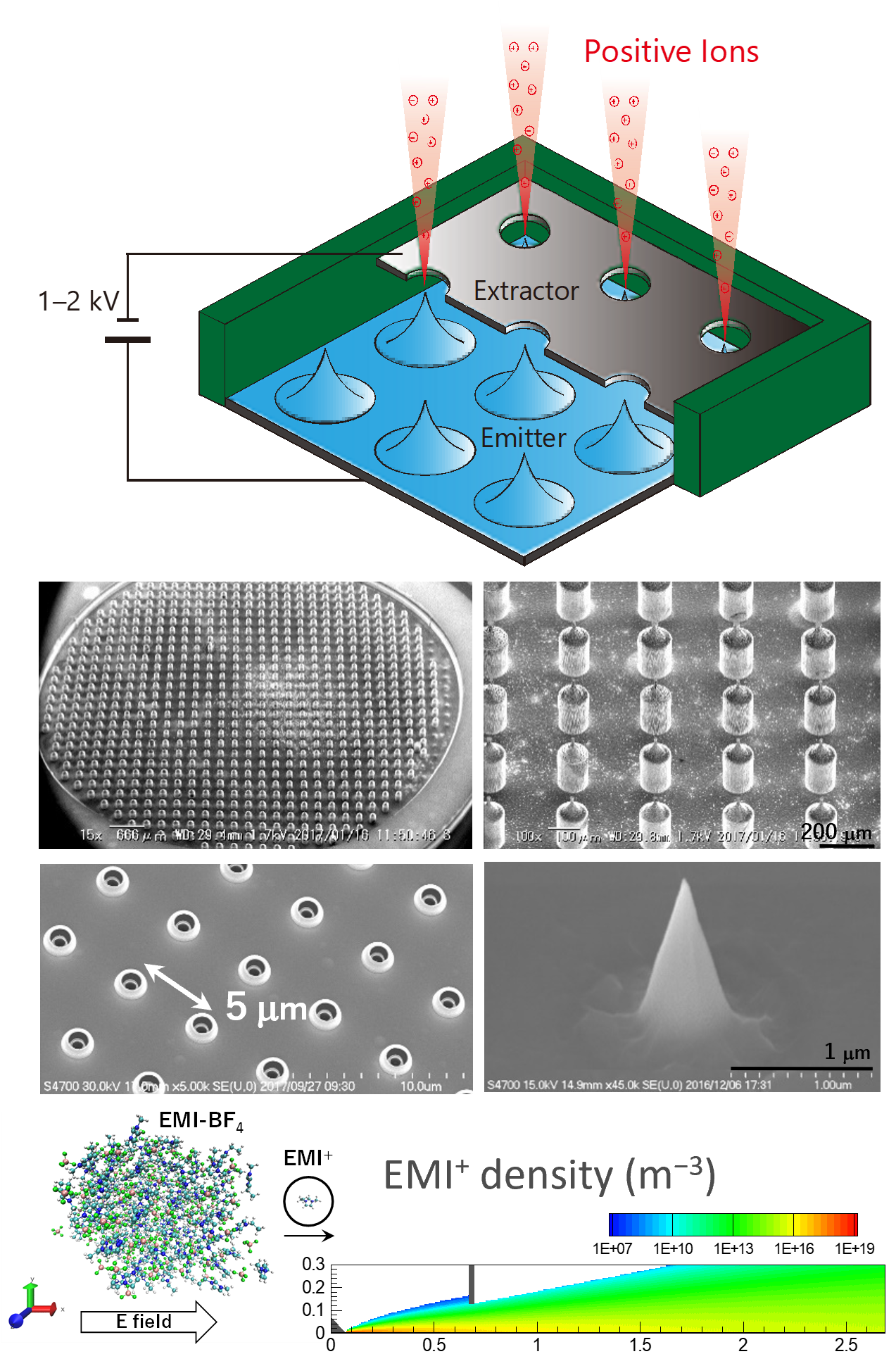
Micro Ion Thrusters / マイクロ・イオンスラスタ
The HODOYOSHI-4, a 50 kg-class spacecraft, was launched on June 19, 2014, equipped with a Miniature Ion Propulsion System (MIPS) that successfully operated in space on October 28, 2014. This marked the world's first operation of ion thrusters on a microspacecraft, positioning micro ion thrusters as promising candidates for high-performance microthrusters capable of producing significant delta-v and total impulse. The MIPS featured a microwave discharge ion thruster. In our lab, we conducted 3D PIC-MCC (Particle-in-Cell Monte Carlo Collision) simulations in collaboration with the University of Tokyo to provide clear guidelines for optimal designs. Additionally, we explored one of the world's smallest RF (Radio Frequency) ion thrusters, measuring 1 cm in diameter and length, using 2D PIC-MCC simulations. This included external RF circuit analysis, plasma diagnostics, and beam current measurements. Currently, we are investigating micro DC (Direct Current) ion thrusters in collaboration with AIST, utilizing propellantless cathodes made from graphene. We are also examining microwave discharge cathodes installed in the "Hayabusa2" asteroid space probe in collaboration with the EP Lab of ISAS/JAXA.
50 kg級の超小型衛星「ほどよし4号機」は 2014年6月19日に打ち上げられ、 この衛星に搭載された小型イオン推進システムは同年10月28日にこのクラスでは世界で初めての運用に成功しました。 マイクロ・イオンスラスタは高い増速量とトータル・インパルスを生み出せる有力な高性能小型推進システムです。 当研究室では、東京大学で開発された上記イオンスラスタを対象に 3次元の PIC-MCC 法を利用したプラズマ源や電子引き出し機構の数値解析を行ってきました。 また、高周波放電を用いた世界最小クラス(1 cm級)のイオンスラスタについても、 放電の高効率化やイオンビーム引き出しの最適化を数値解析と実験の両面から行っていました。 現在は、新しく推進剤不要なグラフェン電子源を用いた直流放電型小型イオンスラスタの研究開発を 産総研カスタムデバイスグループと共同で行っており、 さらに、これまでの実績を利用して JAXA宇宙科学研究所 電気推進研究室と 小惑星探査機「はやぶさ2」にも搭載されたマイクロ波電子源に関する研究も行っています。
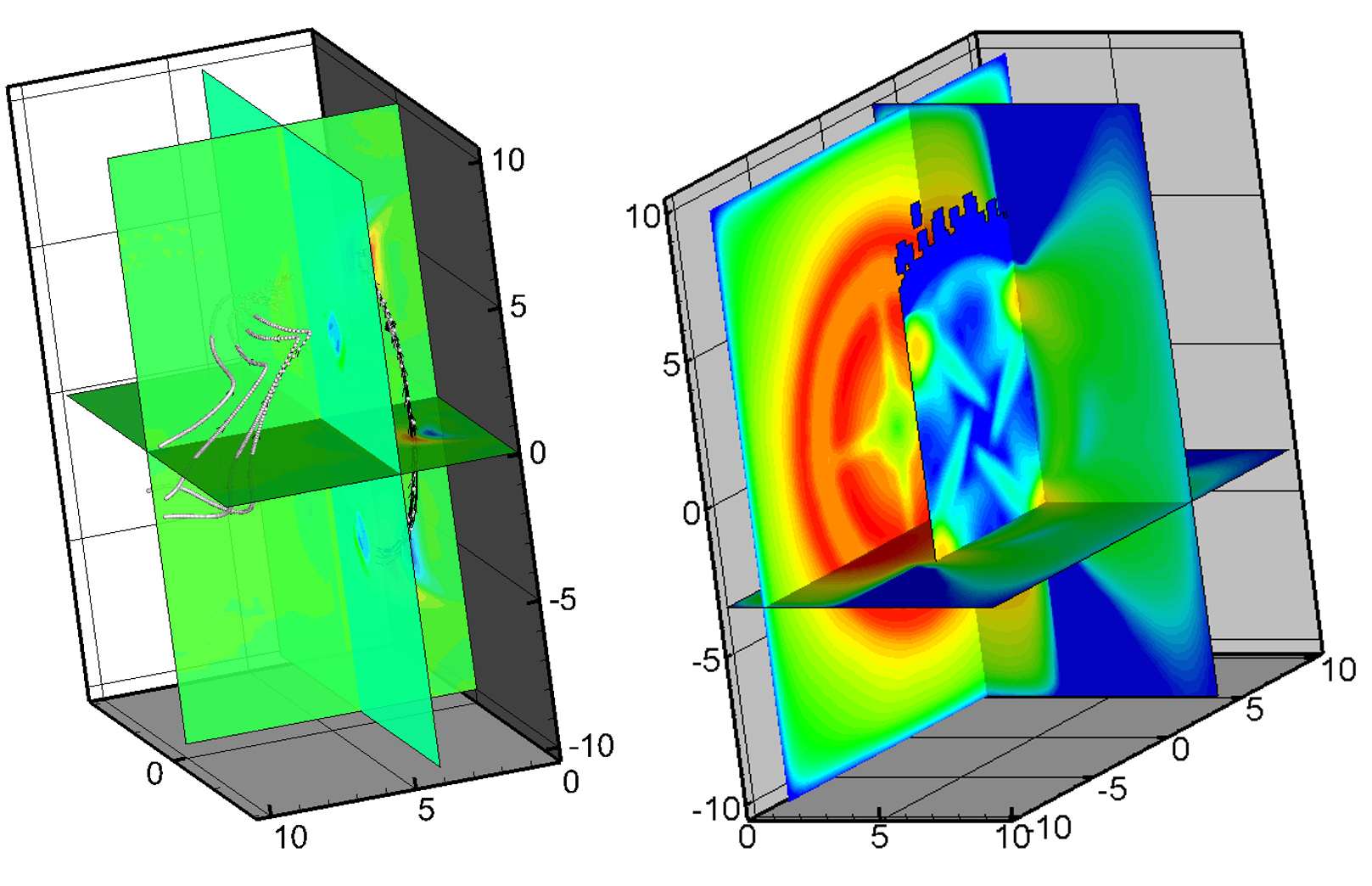
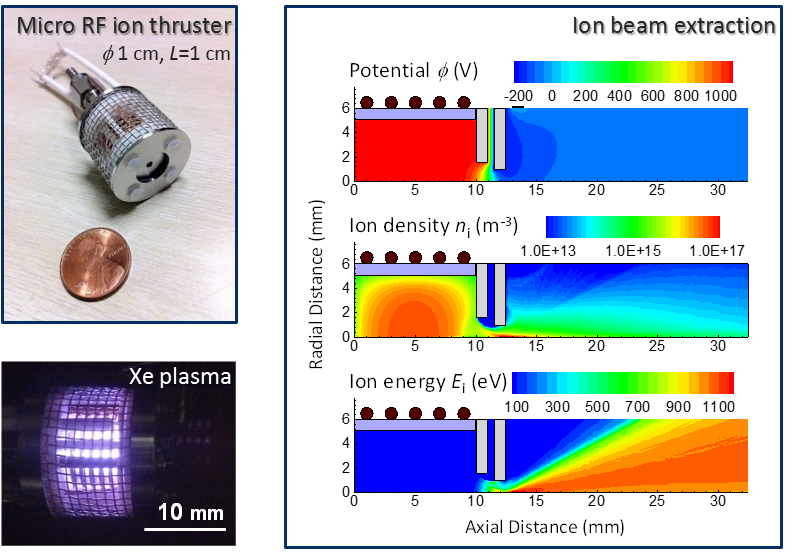
Electrodeless Magnetic Nozzle Thrusters / 無電極磁気ノズルスラスタ
Electrodeless plasma thrusters represent a promising propulsion system for future high-power in-space propulsion. These thrusters utilize helicon waves and a magnetic nozzle for plasma generation and acceleration. Their electrodeless design allows for significantly longer operation times. The mechanisms of thrust generation, the high efficiency of the thruster, and the detachment of plasma from the magnetic nozzle will be investigated in collaboration with Tohoku University through 2D PIC-MCC simulations and experimental studies.
宇宙での大量物資輸送を目指した大電力電気推進機の候補として、磁気ノズルによる加速とヘリコンプラズマ生成を用いた先進無電極プラズマスラスタが挙げられます。 プラズマ生成および加速の双方に電極を用いないことで、非常に長時間の運用が期待できます。 比較的新しいコンセプトのため、推力発生機構の解明や効率化、磁気ノズルからのプラズマ離脱に関する研究が求められています。 本研究は東北大学との共同研究となっており、東北大学で実験を、当研究室で2次元 PIC-MCC を利用した数値解析を行っています。
Electrothermal Microthrusters / 電熱加速型マイクロスラスタ
A miniature electrothermal thruster utilizing azimuthally symmetric, microwave-excited plasmas was developed. The propellant gas, argon, at pressures of 10–100 kPa, was excited by surface waves at powers below 10 W. We conducted Two-Dimensional Finite-Difference Time-Domain (2D FDTD) analysis and two-temperature fluid simulations to study plasma generation and flows through the micronozzle. Optical Emission Spectroscopy (OES) and thrust measurements were also performed. For CubeSat applications, we explored low-pressure micro water resistojets in collaboration with the University of Tokyo, focusing on both design and testing. Direct Simulation Monte Carlo (DSMC) simulations were employed to model the rarefied gas flow within and downstream of the nozzle.
Arガスにマイクロ波電力を投入してプラズマを生成し、その熱をマイクロノズルを用いて超音速ジェットに加速するマイクロスラスタです。 プラズマ源のマイクロ波電磁場構造やマイクロノズル流れの数値解析とともに分光測定や推力測定等の実験的研究を行ってきました。 また、東京大学との共同研究として CubeSat に搭載可能な水を推進剤とした小型レジストジェットスラスタに関して希薄気のノズル流れと後流を DSMC 計算で解析していました。
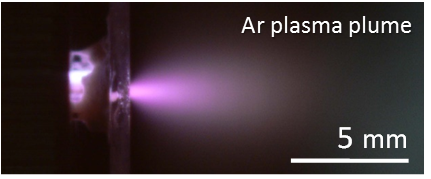
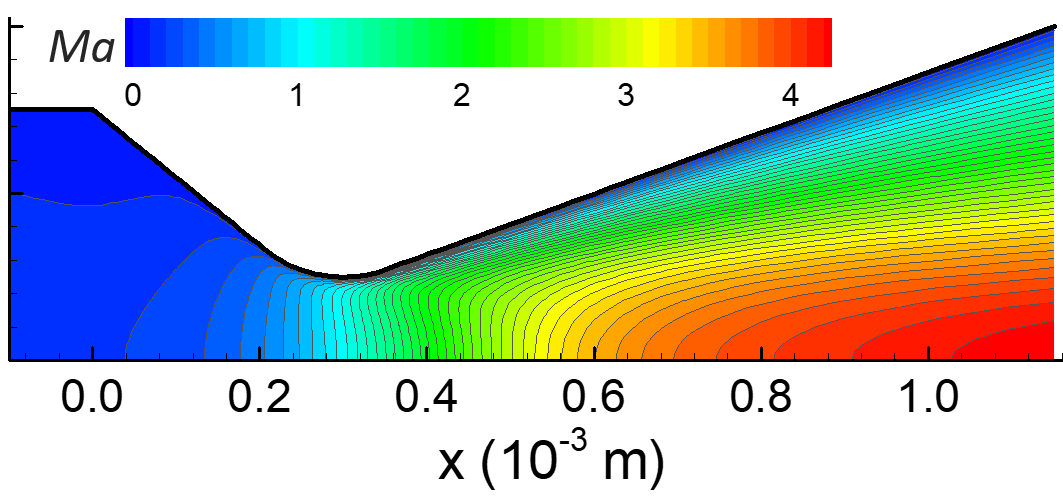
Radiation Shielding on Mars / 火星における放射線シールド
The Martian surface, which has a thin atmosphere and lacks an intrinsic magnetic field, is exposed to space radiation. However, magnetic anomalies exist in the southern hemisphere. To identify safe areas for human activities, we numerically evaluated the radiation dose in regions where the magnetic field is present. It was found that the trajectories of the radiation changed in the presence of the magnetic field, indicating areas of lower radiation exposure. For more information, please refer to our journal article. This study was conducted in collaboration with EP Lab of ISAS/JAXA.
火星は大気が薄い上に固有磁場もなく,宇宙から降り注ぐ放射線が地上まで到達しています。人が安全に活動できる場所を探すため,わずかに磁場が残る地域に着目し,数値計算で地上の放射線量を評価しました。 磁場がある場所では放射線の軌道が変わり,放射線量の低い地域が明らかになっています。詳細は学術誌に掲載された論文をご参照ください。 本研究はJAXA宇宙科学研究所との共同研究として行われました。
To Top